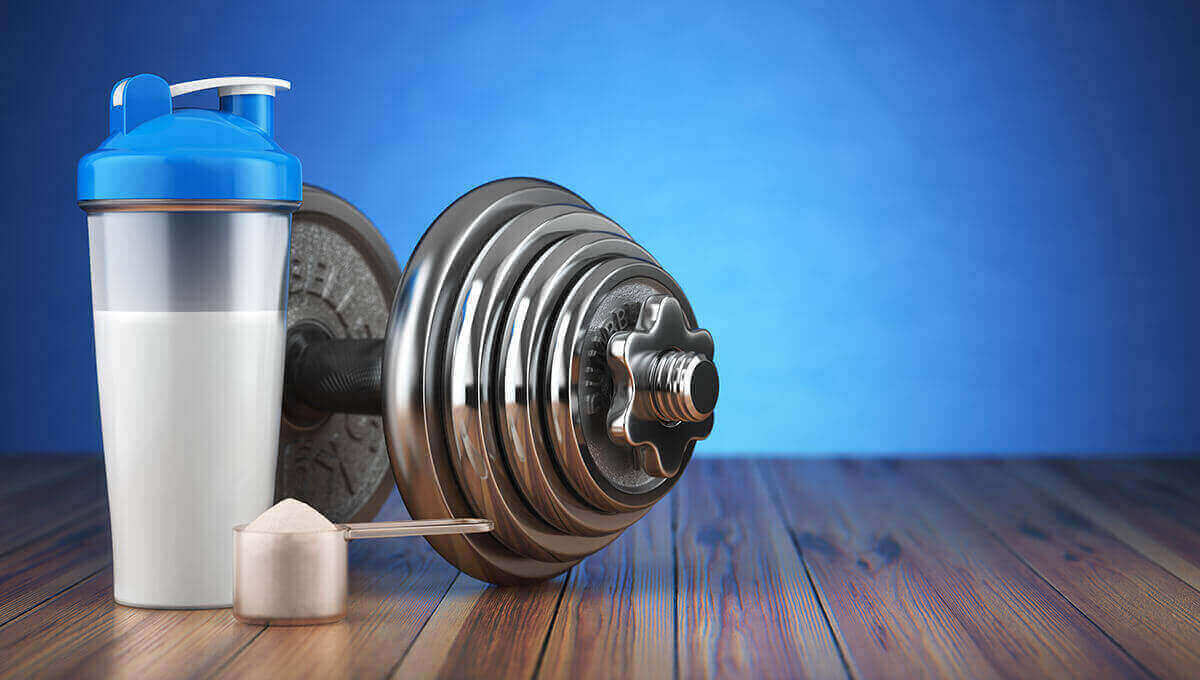
Eiweiß auf Reduktion. Was sollte man über ihn wissen?

Proteins are commonly known to be the core building blocks of all tissues in the human body. They are found in enzymes, hormones or antibodies. Proteins participate in metabolic processes and are responsible for correct functioning of the whole body. They make the body grow and develop and enhance recovery. As proteins are composed of amino-acids, you should compose your every-day diet in such a way as to ensure their proper intake. What are the most common proteins and their properties?
All those who work hard to improve their physical fitness or practise sport professionally know very well that the amounts of proteins they deliver to their bodies can determine the results they obtain. Whether a protein is useful for the human body depends on the content of amino-acids and on its biological value (BV), i.e. the amounts of nitrogen derived from the protein which is retained by the body. The easiest to digest and the most absorbable proteins are obtained from hen eggs. The body uses up to 94% of the proteins contained in the eggs. This makes hen egg a reference point for other natural sources of protein (hen egg is the first on the list with BV = 100).
The market of nutrients for athletes and bodybuilders abounds with dissolving protein powders, manufactured in different technological processes, with a BV higher than that of hen eggs. This makes such products absorbed much easier than proteins obtained from hen egg.
For years, hen egg has been considered beneficial to professional athletes or bodybuilders. Its popularity was because it was known as a comprehensive source of exogenous amino-acids, i.e. ones that cannot be produced by the body and must be delivered with diet, as an important health-enhancing factor. In fact, hen egg contains several amino-acids that are indispensable for an adult to have a healthy life, including leucine, valine, isoleucine, phenylalanine, tryptophan, methionine, threonine and lysine. Plus, it is characterised by the highest content of alanine and arginine, which stimulate nitric oxide synthesis. Nitric oxide causes blood vessel dilation and enhances skeletal muscle blood flow, thus improving the supply of oxygen, nutrients and anabolic hormones to the muscles. Additionally, hen egg is a perfect source of vitamins E, K, A and B, riboflavin, folic acid and minerals, including potassium, magnesium, zinc, calcium, phosphorus, copper, iron and selenium; and is rich in branched-chain amino-acids (BCAA).
Hen egg is easily digested by the human body, and delivers building materials needed for muscle recovery and proliferation. Although effective, the process of digestion and absorption of egg whites is rather slow and takes c.a. 1.5-3 hours, in which time the blood is continuously saturated with amino-acids. Hen egg-white has a beneficial effect on post-workout muscle recovery and helps maintain a positive nitrogen balance.
Protein cocktails with hen egg-white should be drunk right before bedtime. When combined with other fast absorbing protein sources, they can be used immediately after working out and at any time of the day. It is also a good idea to drink the cocktail 1 hour before workout, to ensure high level of anabolic amino-acids during intense anabolic activity. This will suppress the catabolic response of the muscle tissue whilst intensifying anabolic reactions.
Hydrolysates are milk proteins produced due to the breaking of peptide bonds in the process of hydrolysis. In the reaction, the compounds are converted to a fast-absorbing form. This means that whey is a fast-digestible and, thus, highly anabolic source of protein; maximum blood concentration is achieved after 1-1.5 hour after consumption.
Absorption of such proteins takes 15 to 60 minutes. A nutrient based on this type of protein should be taken 15 minutes before and immediately after workout. Hydrolysed whey protein is the most anabolic product when it comes to short-term protein synthesis. It should be eaten together with other forms of protein, which have longer digestion time. To minimise the time when the body is left without the ingredients needed for recovery, hydrolysed whey protein should be taken right after the workout, together with complex amino-acids absorbed from the digestive tract immediately after consumption. Hydrolysed protein can also be drunk during workout, to minimise catabolic damage to the muscle tissue. Plus, it makes a perfect snack. Nonetheless, it must be remembered that hydrolysed whey protein does not deliver the sufficient amount of calories for the body to initiate metabolic processes. This calorific deficiency prevents the body from getting enough nutrients, which, in turn, slows down metabolism.
In the last ten years bodybuilders have become increasingly attentive to protein content in their everyday diet. This is because they have understood that muscle growth depends on the amount of protein that they regularly deliver to their bodies. Among the proteins that are specifically popular with bodybuilders and athletes is casein. Casein is a milk protein isolated in the digestive process. It is the most important of all milk proteins (comprising c. 80% of the proteins in cow's milk), and a most useful agent in haemoglobin and plasma protein synthesis.
Casein proteins are high quality proteins, rich in exogenous amino-acids. They are filtered out in cheese production process. Based on the quality which is undoubtedly the main asset of casein, two forms of the protein can be distinguished, i.e.:calcium caseinate, or caseinate, which is the least valuable of all milk protein fractions. Calcium caseinate is collected before the milk gets sour in the cheese production process; and micellar casein, rich in glycomacropeptides, which prevent cavities and protect the body against bacteria and viruses. This group contains bioactive casomorphin peptides, known for their opioid effect. This form of casein is the best. The substance also makes one of the least processed protein supplements. With its spatial structure, intact in the technological process, when consumed the protein converts into a gel, which is highly resistant to gastric acids and very slowly moves along the digestive tract. This extends the time of release and absorption of amino-acids to up to 6 or 7 hours. The tests show that the slower the digestion, the bigger the absorbability of nutrients. All this makes micellar casein the best supplement enhancing muscle recovery.
The substance can also be used as a meal replacement. Finally, it is worth noting that digestion of gel casein takes more energy than digestion of other protein products. As a result, micellar casein improves the chances of fat loss when compared to other proteins.
When analysing the physiochemical properties of micellar casein, it must be remembered that digestion of nutrients that are based on the substance begins only after c.a. 90 minutes after their intake, with full absorption taking 6 to 7 hours. Since micellar casein releases the amino-acids gradually for long hours, it is oftentimes referred to as anti-catabolic or night protein. Micellar casein is rich in branched-chain amino-acids (BCAAs) and glutamines, which additionally prevent protein catabolism in muscle tissue whilst accelerating anabolic processes. Casein impact on recovery over the course of a several hour sleep is invaluable: it protects the body against hunger and dropping blood’s nutrient content for many hours.
All those who know the role of proteins in everyday diet need to remember that the primary source of protein should be animal products. However, when these are not available, protein cocktails can be a good solution. Nevertheless, it must be remembered that so delivered proteins should not exceed 40% of the body’s overall energy demand.
Different proteins can be combined; e.g. oatmeal can be mixed with whey protein powder. Contrary to popular opinion, there is no such thing as “bad proteins”, only they are sometimes improperly selected or used. All we need to do to succeed is use our heads.
The information below is required for social login
Sign In
Create New Account